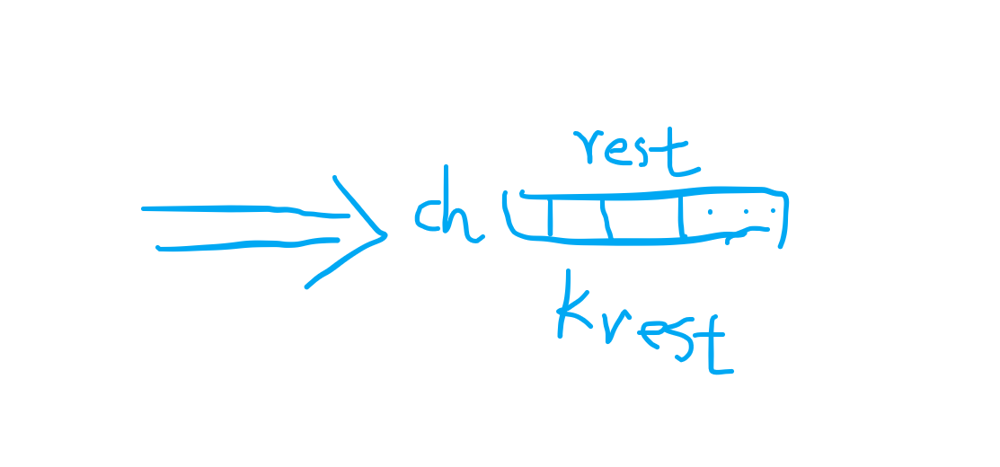[LeetCode][1663. Smallest String With A Given Numeric Value] Greedy O(n) Solution with Image Explanation
By Long Luo
This article is the solution Greedy O(n) Solution with Image Explanation of Problem 1663. Smallest String With A Given Numeric Value.
Greedy
As we want to minimize the lexicographical order of the constructed string, let’s start from the beginning of the string, select the smallest letter that satisfies the requirements each time, then we get the final answer.
Suppose we are currently constructed to a certain position, as the picture below shows.
Including this position, there are still \(n_{rest}\) left to fill in, the remaining sum of these rest positions is \(k_{rest}\).
If we put a letter \(\textit{ch}\), and so the remaining \(n_{rest} - 1\) positions with the sum is \(k_{rest}\) must satisfy:
\[ 1 \times (n_{rest}-1) \leq k_{rest}-ch \leq 26 \times (n_{rest}-1) \]
can be:
\[ k_{rest}-26 \times (n_{rest}-1 ) \leq ch \leq k_{rest}-1 \times (n_{rest}-1) \]
So \(\textit{ch}\)
- \(k_{rest} - 26 \times (n_{rest}-1) \leq 0\), we choose the character \(a\);
- \(k_{rest} - 26 \times (n_{rest}-1) \gt 0\), we choose the character corresponding to this value.
Let’s write the code:
